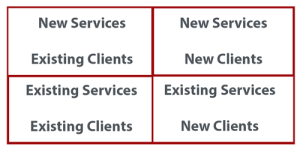Are You Using The 80/20 Rule? Or Is It Using You? 2 Simple Profit Improvement Business Ideas
In 1906, Italian economist Vilfredo Pareto observed that 80% of the land in Italy was owned by 20% of the population. He also observed that 80% of the peas in his garden stemmed from 20% of the pods.
And so began what’s known as the 80/20 rule or the Pareto Principle—the idea that 80% of your results come from 20% of your efforts.
This principle tends to show up more often then we realise. And our success lies in how we interpret it and react to it.
One aspect of business where we see this all the time is 80% of a business’ profit coming from 20% of their clients. It usually happens when a business moulds its methods around a client’s demands, rather than fitting the client into their business processes while still achieving its objectives—pricing, scope of work, payment terms, etc.
It’s important not let other people govern your business. Here are a couple of ways you can limit your efforts for the 80% of clients who bring you little benefit.
1. Apply Client Selection Criteria
In most cases, 20% of your clients will keep the business afloat, while the other 80% ‘pay the rent’ or smooth things over in the quiet times. Unfortunately, we often get hung up on those 80% despite the fact they’re unprofitable, high-maintenance, and difficult to deal with.
You can avoid this by having clear selection criteria for your clients.
Here’s a strategy you can try:
- Work out your ideal client (look at your current “best clients” list), and list their attributes. These are your “green” clients. You like working with them, you give them great value, they pay their bills on time, and you wouldn’t hesitate to take on more work from them.
- Now do the same for the clients you should never have agreed to work with in the first place. You’ll find they have common attributes—they may never see your value proposition, or they may finance their business on yours by holding off payment. These are your “red” clients. We recommend you stop taking on work from these clients, regardless of how much your revenue drops temporarily. Yes, turning down work can be hard, but once you replace them with more “green” clients you’ll be thanking yourself.
- Any clients left over are “amber” clients, and you should consider them on a case-by-case basis. While they’re willing to listen to your advice, pay for the value you provide, and are good to work with, feel free to take them on as clients. Just make sure they don’t become “reds”.
Ultimately you want clients who are great to do business with. So save your sanity and let go of those clients who do nothing but test patience.
We understand that saying goodbye to most of your clients is a scary thought. But we have an idea that will make it seem far less dangerous.
Your “green” clients won’t necessarily be aware of every service you can provide for them. And many studies have found that, on average, it is 6 times more cost effective to sell to an existing client, than to invest in attracting a new client.
2. Stick to what you know, with who you know
One of the simplest and least stressful ways to increase revenue is to provide existing services to the clients you already have. Look at the table below. Which quadrant do you think would be the easiest to sell to?
Of course, the answer is the bottom left—selling services you already have to clients you already know. But businesses often focus on selling to the bottom right quadrant instead. Take our advice, and stick with what you know and who you know.
Create a culture in your business of providing existing services to your current clients (identifying, suggesting, delivering, etc.) It can develop through regular nurturing meetings, identifying opportunities while working on existing projects, running events and webinars, and so on.
And don’t forget tell your clients about your complete ‘menu of services’. It helps them identify help they may need, and who they can call on to get in.
A great way to identify who is missing out on what services is to create a client matrix. Create an Excel spreadsheet with your services across the top (columns) and your clients down the side (rows). Then simply place a ‘tick’ in the services you provide for each client. A blank space means either the service isn’t appropriate for that client or you need to start offering it pronto.
The key is to take action and implement. We’ve had great results using this process, and so have many of our clients.



